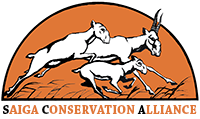In May 2024, we, as usual, planned a trip to Resurrection (Vozrozhdeniya) Island on the dried-up bed of the Aral Sea for the purpose of conducting field research to study the status of the saiga antelope and other important species. Our task was also to check and reinstall camera traps – our favorite field equipment that provides a huge amount of information about wild animals, their distribution, seasonality, and behavior. Our plans included visiting places that we had never visited before (and no one in history!) due to their inaccessibility and poor passability for ordinary off-road vehicles that we usually use.
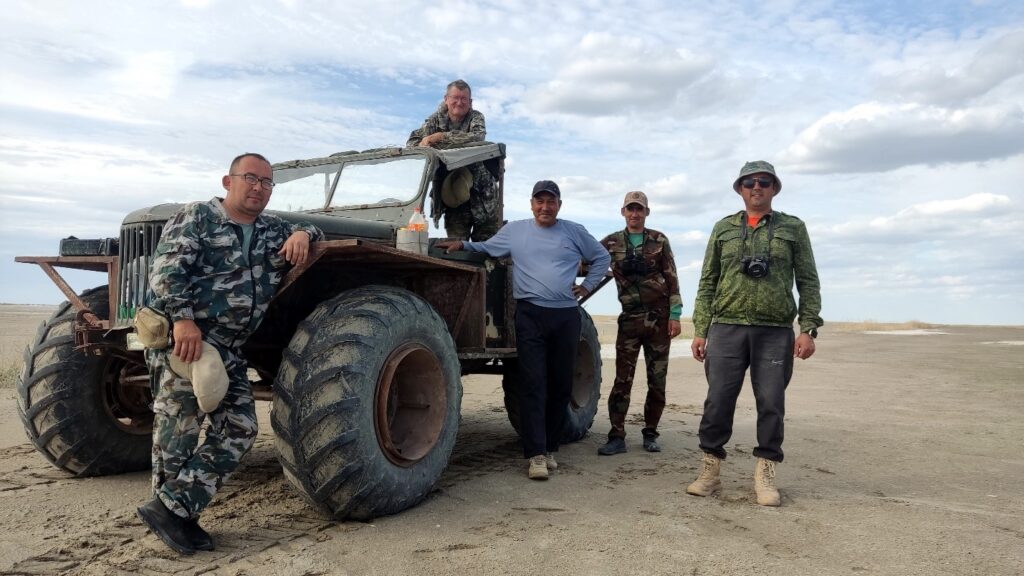
We already knew that the inhabitants of Muynak, who collect artemia eggs, make their own kind of all-terrain vehicles from parts of old cars. To implement our plan, we began to search for a suitable all-terrain vehicle. It should be noted that we ourselves drive fairly old SCA off-road vehicles (Niva), which, although they help us overcome off-road conditions, have very limited cross-country capabilities. They often get stuck in the sand and marshy areas. In addition, the machines are already almost 10 years old, they constantly break down, and this greatly limits our mobility and creates risks for the survival of the team in remote places. Therefore, it was so important to find an affordable transport on which it would be possible to drive to interesting places, leaving our car in safer places.
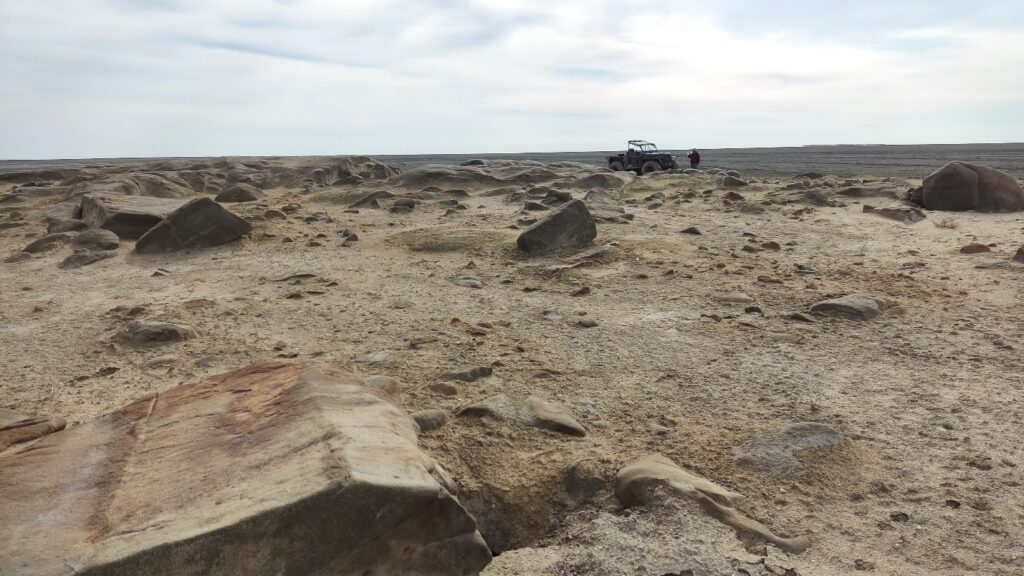
So an all-terrain vehicle – a strange hybrid of a GAZ-69 with wheels from some huge trucks – was found. Despite the intimidating appearance, Azhibav made it not only passable, but also reliable, which we were convinced of during the expedition. And now we are finally ready to go into the field. Taking the necessary supply of food, gasoline and water, as well as inviting employees of the Aralkum National Park to the team, we leave for the dried-up bed with the main goal of visiting new places in search of saigas and other mammals, studying birds, reptiles and invertebrates.
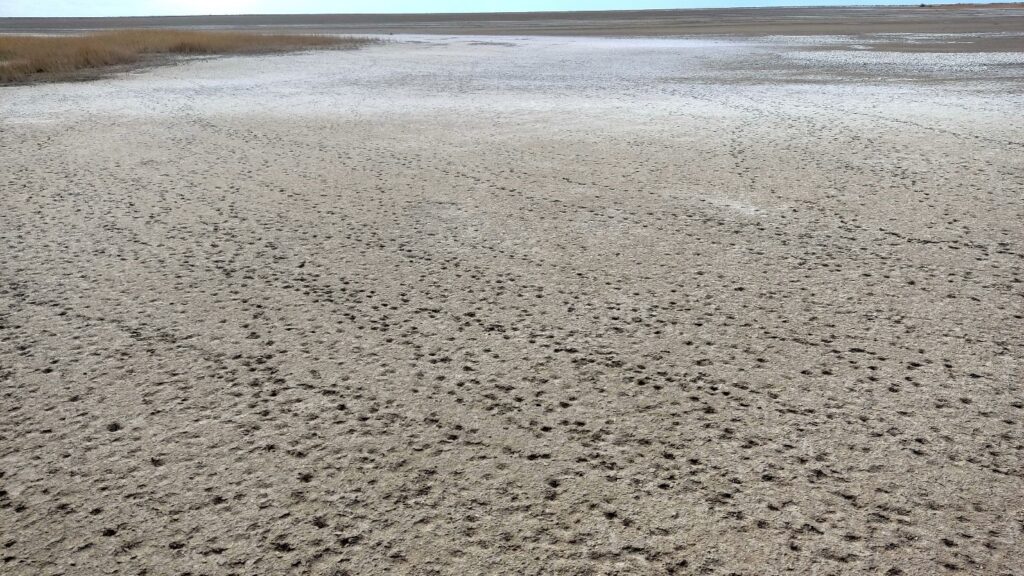
In the team of zoologists with us is the permanent head of field expeditions and an excellent mammologist Sasha, a professional ornithologist Javlon, a beginner entomologist Muratbai, employees of Aralkum Mirbek assisted by ranger as well as our guide, an expert on the nature of the Aral Sea and the owner of an all-terrain vehicle Azhibav and his young assistants. A total of 9 people is a fairly large team. Which, as we hope, will help to collect the most voluminous material possible, as well as allow the employees of the new national park to better master the territory and jointly determine the places for monitoring.
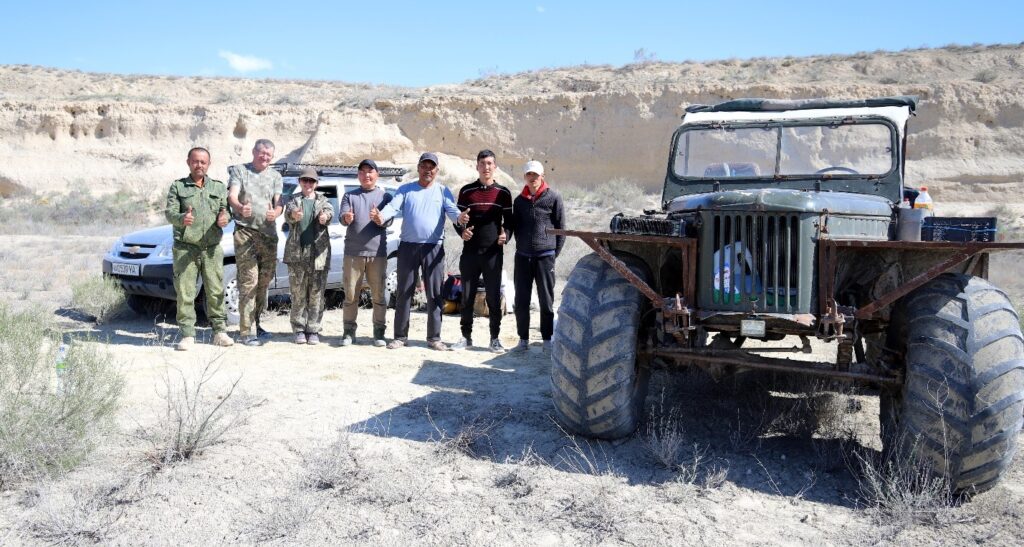
May 5-6. Turn to the drying up at 40 km and almost immediately we faced with fresh saiga tracks. Looking ahead, I will say that we managed to see the saigas themselves a little later – young saigas females that ran out to meet us from the desert. We moved towards the reed thickets that we saw on the satellite image, crossing areas of primary drying up overgrown with desert vegetation – Calligonum, tamarisk, saxaul, astragals, etc., alternating with secondary drying up – practically bare dry land with no signs of life. It felt like we were sailing across the sea from one small “island” to another one. And it is these “islands” that are the habitats of a whole range of animals, including the saiga antelope. The places are clearly not rich, the saigas would obviously dream of another “paradise”, with richer vegetation and stable water sources, but it was these places inaccessible to people that allowed the saigas of Resurrection Island to survive. After Resurrection Island was connected to the mainland and hunters for the precious antelope horns poured in. The animals had no choice but to run and hide where it would be difficult for poachers on motorcycles to catch up with them.
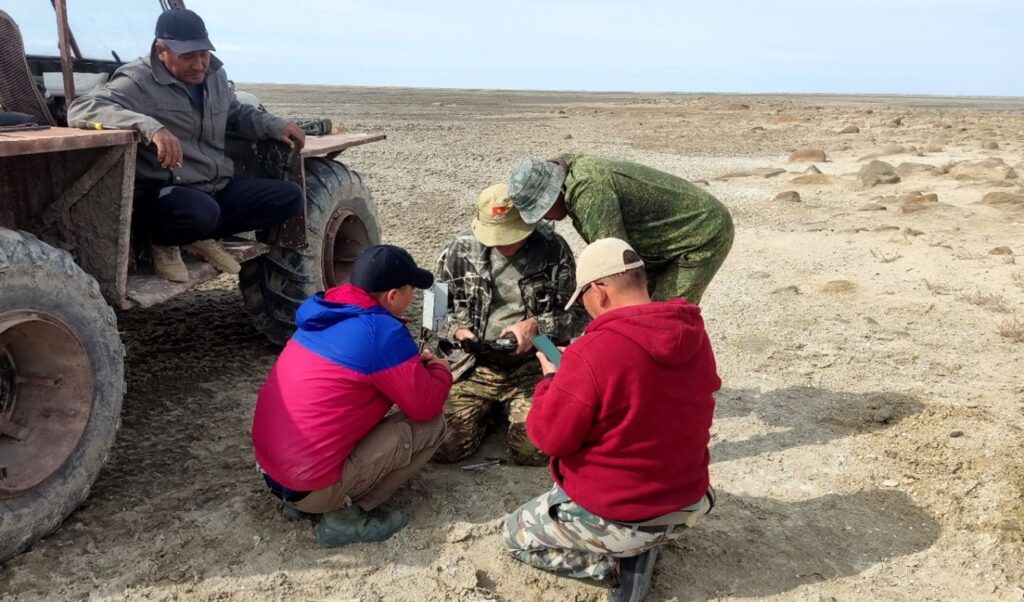
So, moving from one islet to another, fixing the coordinates, the number of tracks and saiga excrements on the map, we reached our first camp, from where we made the first trip on an all-terrain vehicle towards the reed swamps. Our calculation was fully justified. The next day we systematically drove around one swamp after another, recording a fairly large number of traces of saigas and wild boars. It is surprising that in these places we did not notice a single predator – foxes and jackals common on Resurrection, as well as the rarer badger, whose typical habitat is wetlands. But Javlon recorded a lot of birds, both typical inhabitants of reed thickets and desert biocenoses. The most interesting find was the gray cranes, whose tracks we found on the outskirts of the reeds, and later we saw the birds themselves in the reeds on Resurrection Island.
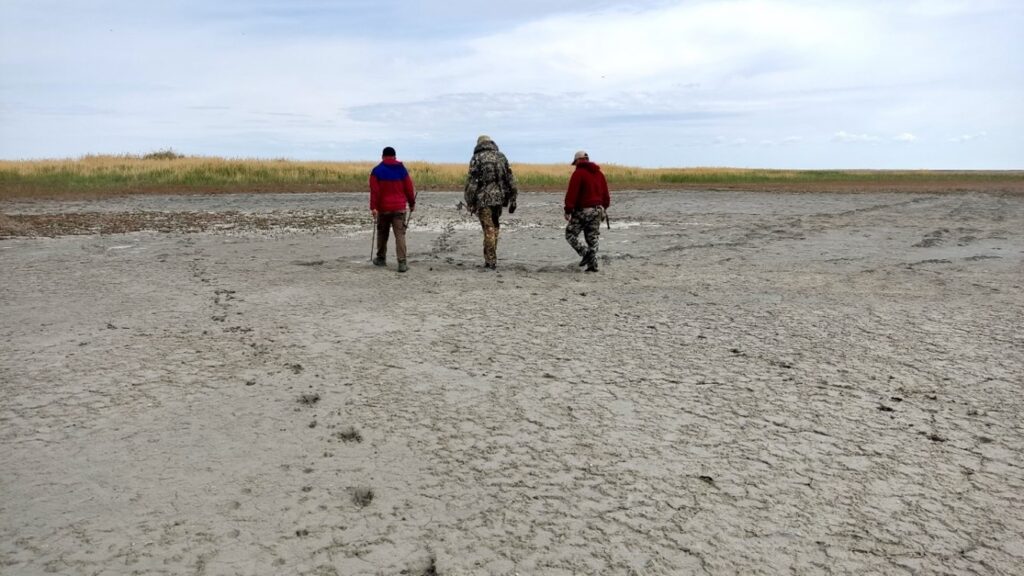
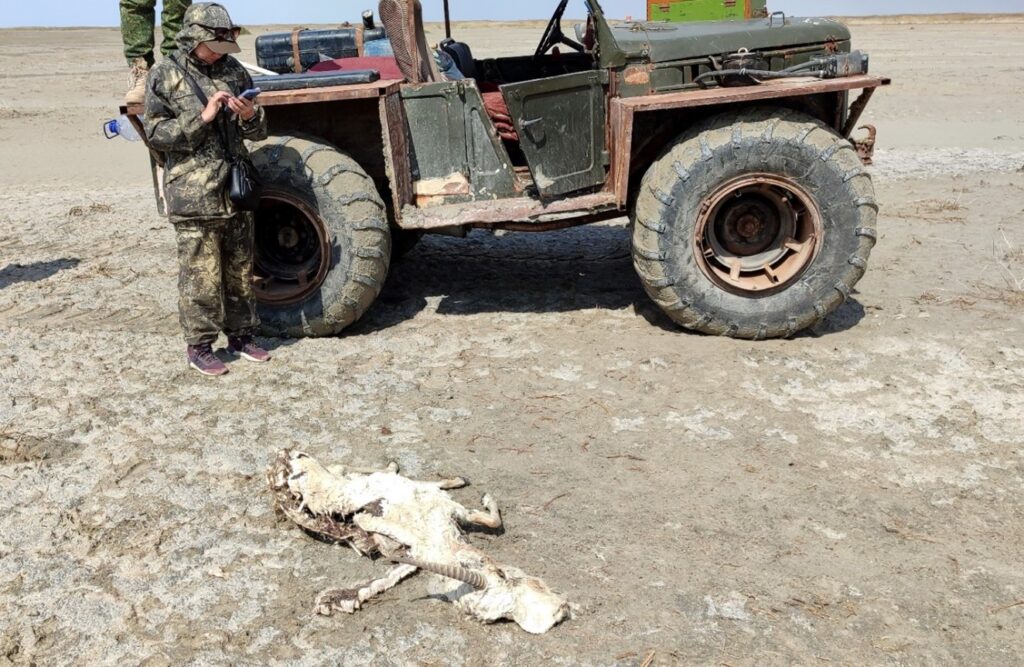
May 7-8. The next stop is Badger’s (Barsuchy) Island. In fact, this island is unnamed, but it is a real island without quotes with the richest shrubland, quite well-composed with the usual set of fauna for indigenous islands. There are saigas and foxes, there are many hares and desert rodents. Well, the pearl in our mammalogical collection was the badger, whose “smoking” trail Sasha and I came across. We are thinking now we will go “in the heel”, we will find a hole, set a photo trap and the job is done – sit and admire the frames on the theme of “the life of the hole.” Three kilometers of brisk lynx along the sandy dunes and valleys and … the badger has disappeared … It just evaporated. In his honor, we named the island after Badger, we hope that this name will be preserved in history.
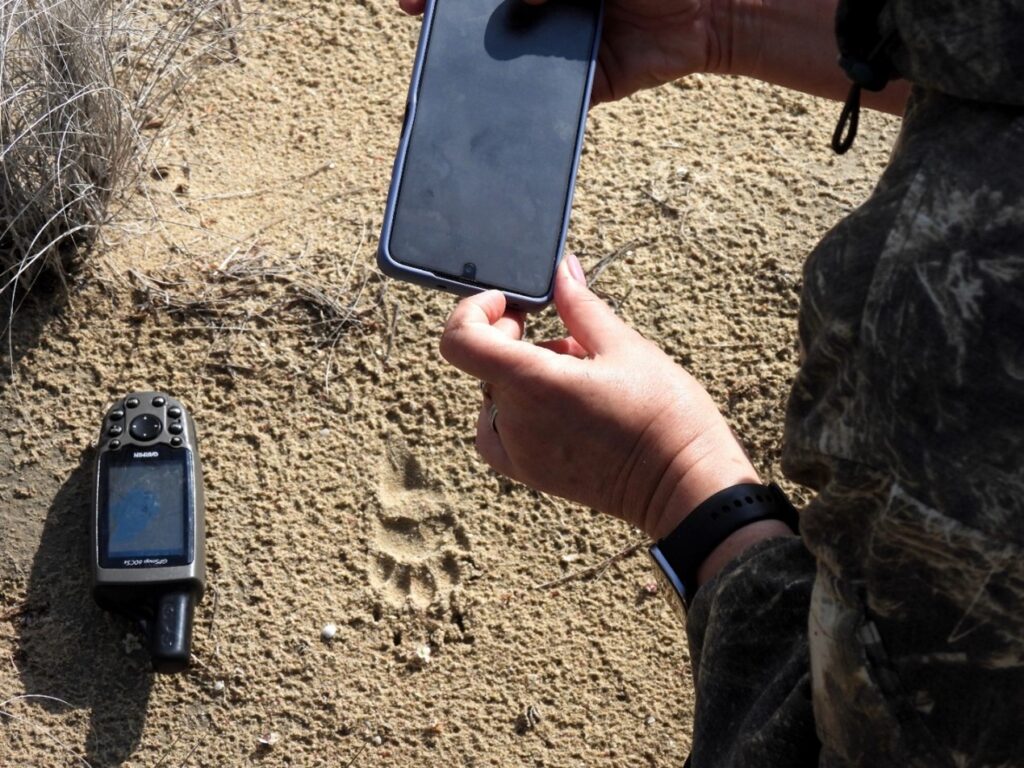
Although the name Mushroom (Gribnoy) Island competed with this name. I have never seen such huge mushrooms and so many. On the way from Badger’s to Resurrection Island, we visited a number of rocky ledges that used to rise above the water surface. In favor of this version is an interesting find of several nesting colonies of great cormorants, numbering hundreds of nests.
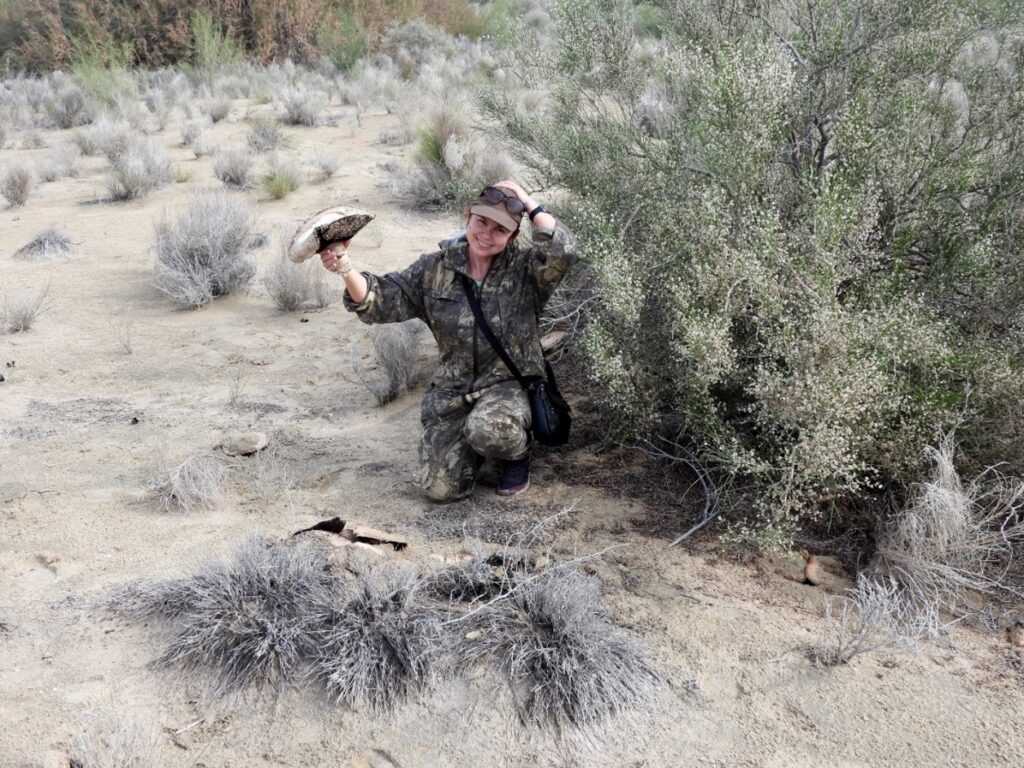
May 9-10. And now we are finally on Resurrection Island. We find the last location of saigas for this expedition, working with camera traps and re-install and install a new place – to the former lake with the same name Lake Resurrection. Now it is an extensive salt marsh, surrounded by a picturesque ledge and surrounded by a strip of dense saxaul. To say that there are many hares here is to say nothing. There are a lot of hares here, they are literally at every step. From the standard set for Resurrection – red fox, golden jackal, badger, steppe tortoise, sand grouse, eagle owl, house owl, common kestrel, saiga, wild boar and many sparrows. Interesting observation – bats, their droppings were found in almost every niche of the chink.
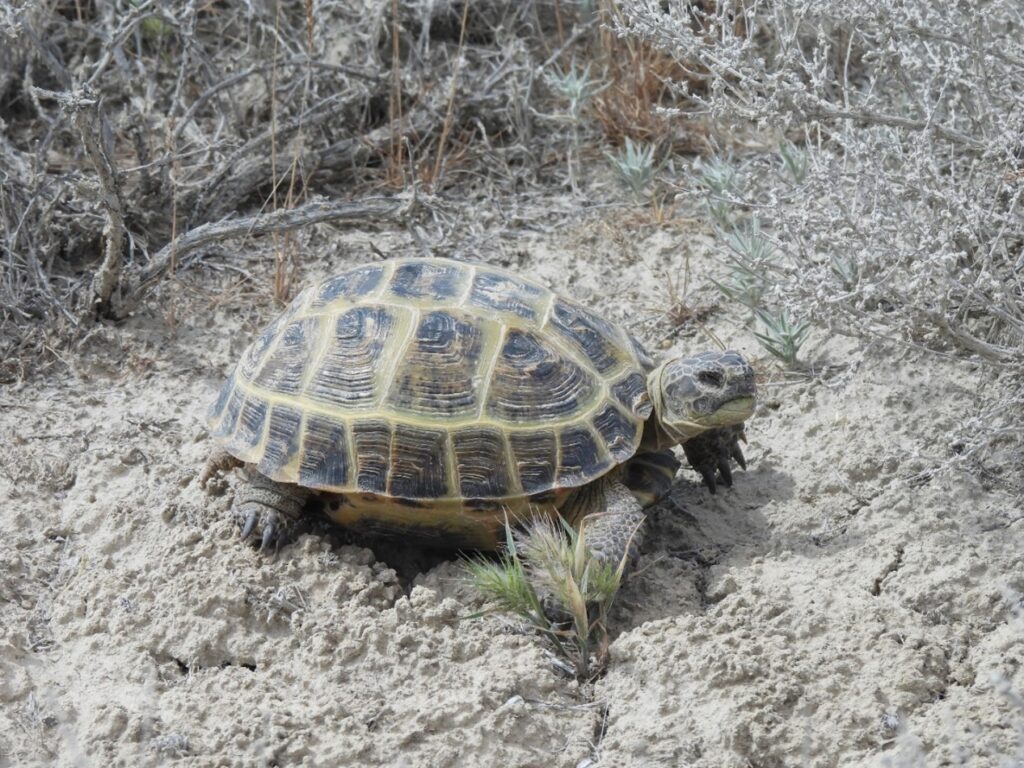
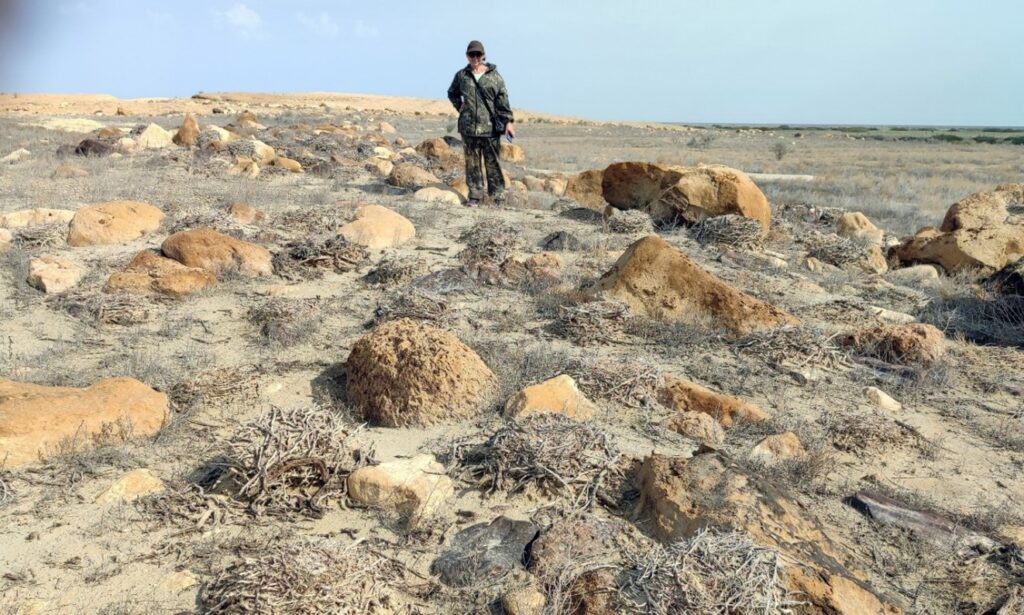
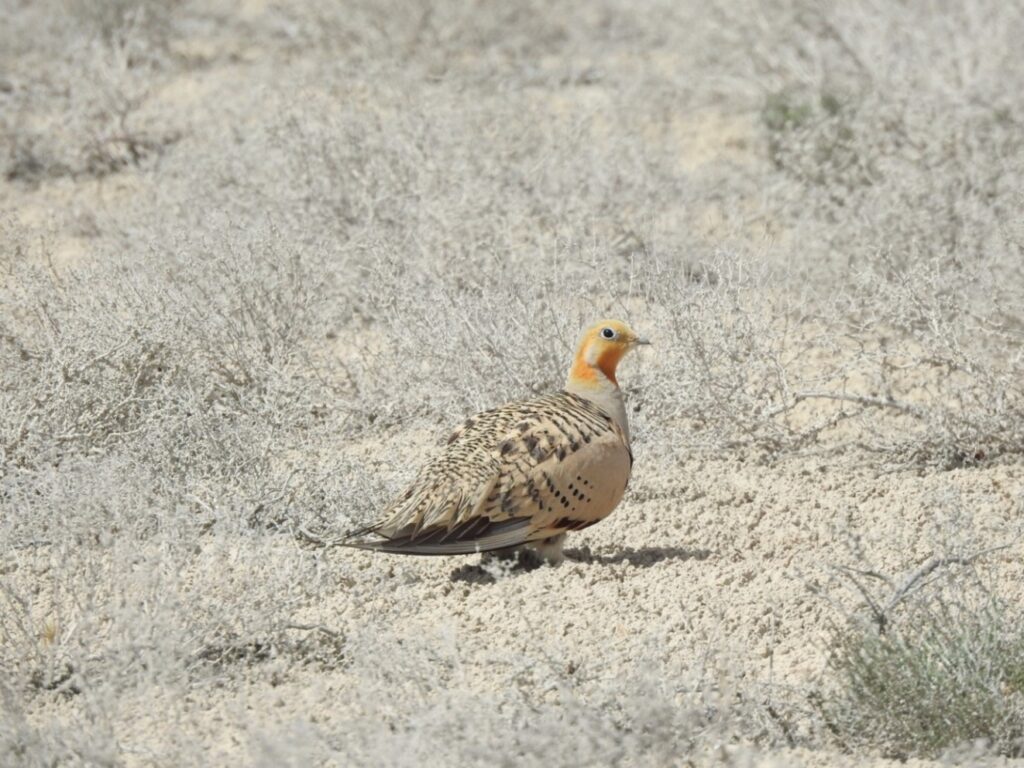
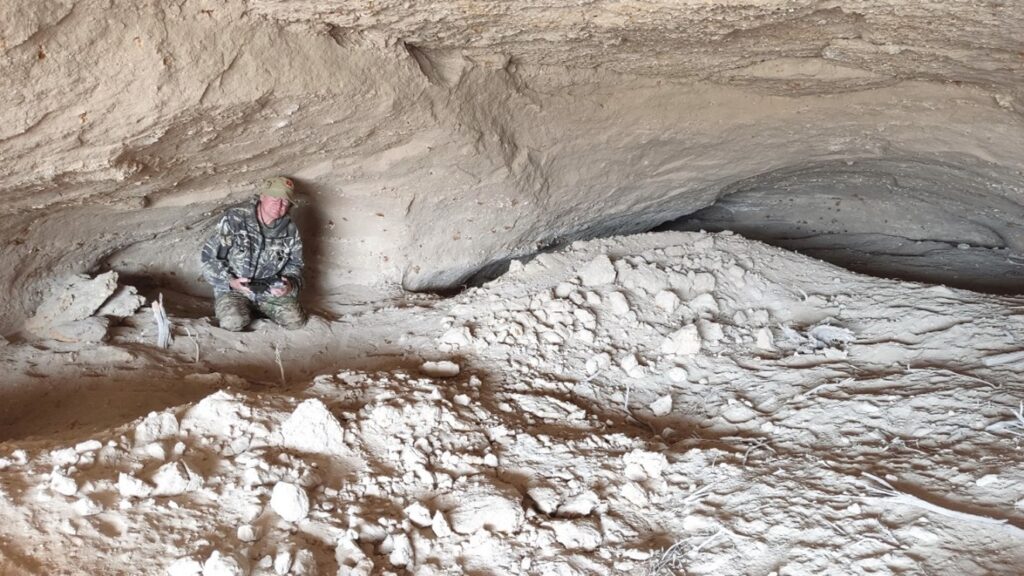
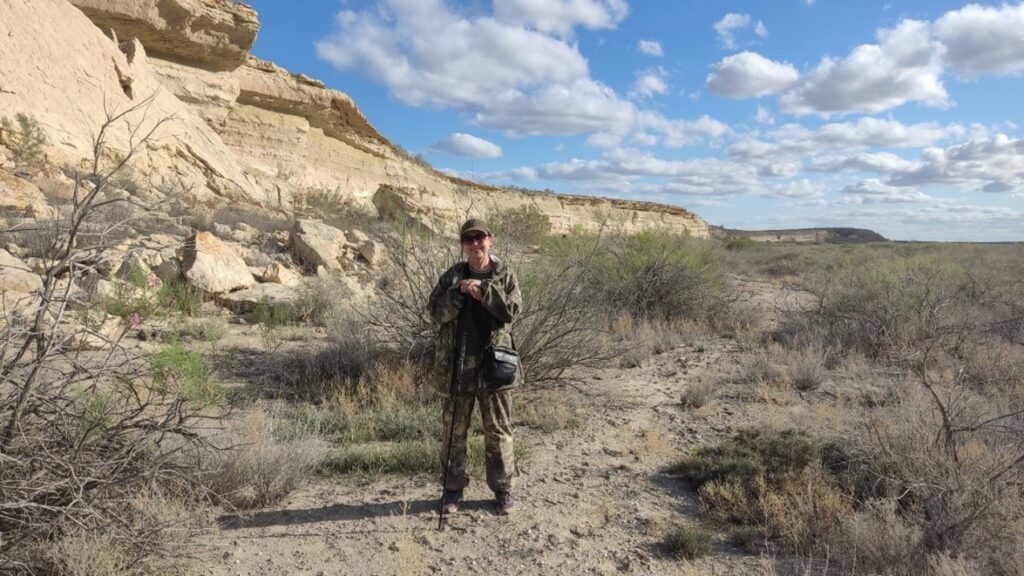
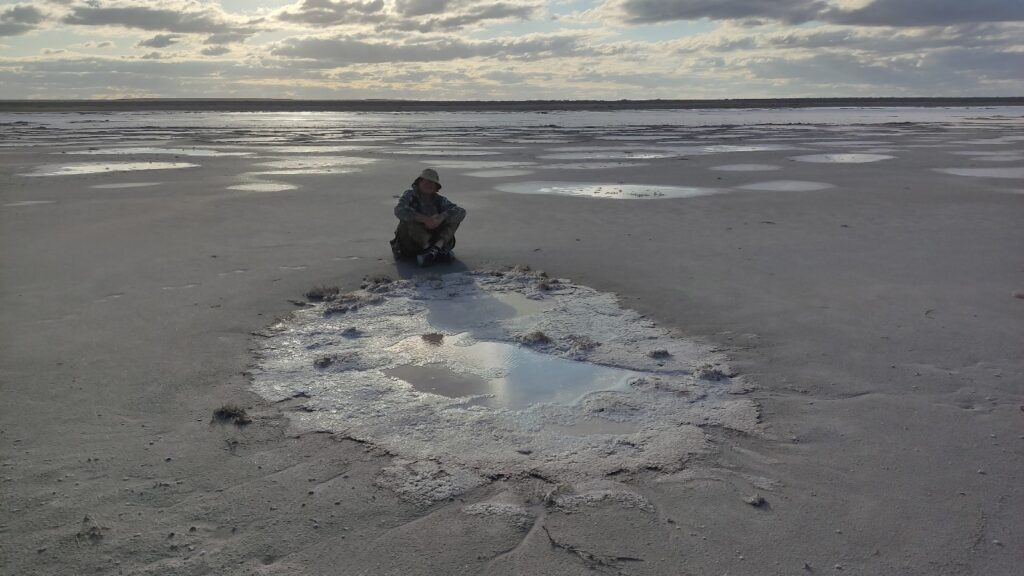
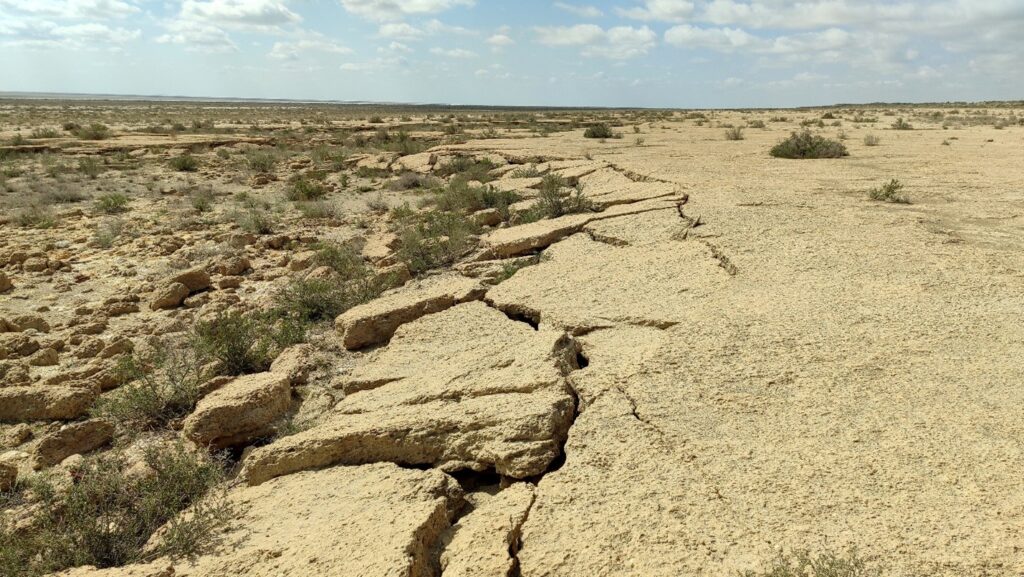
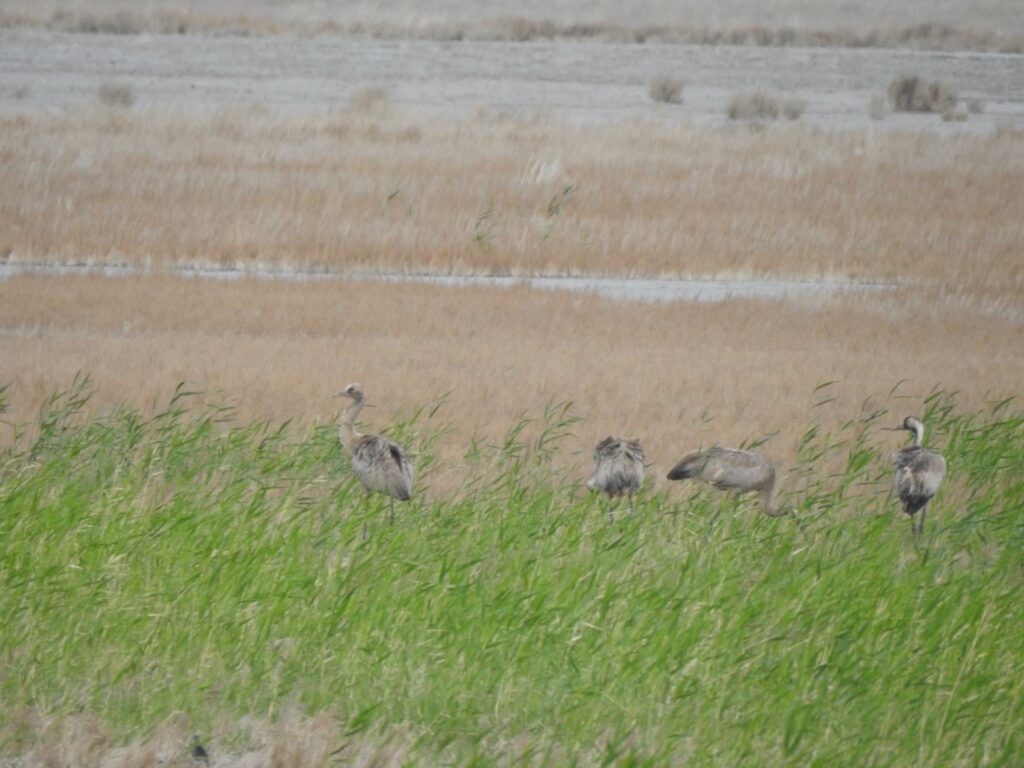
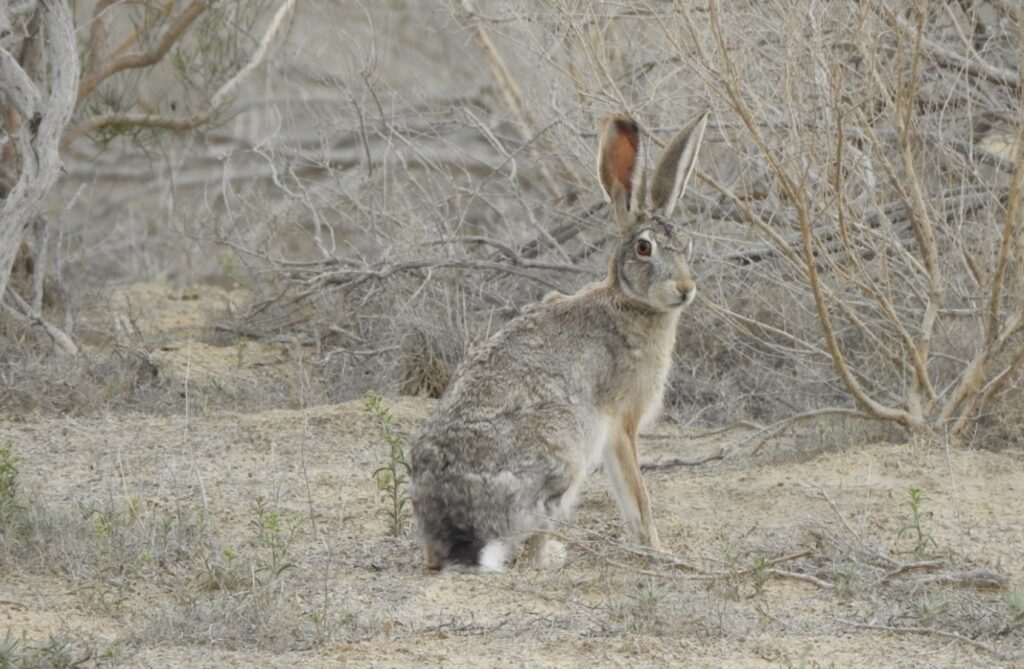
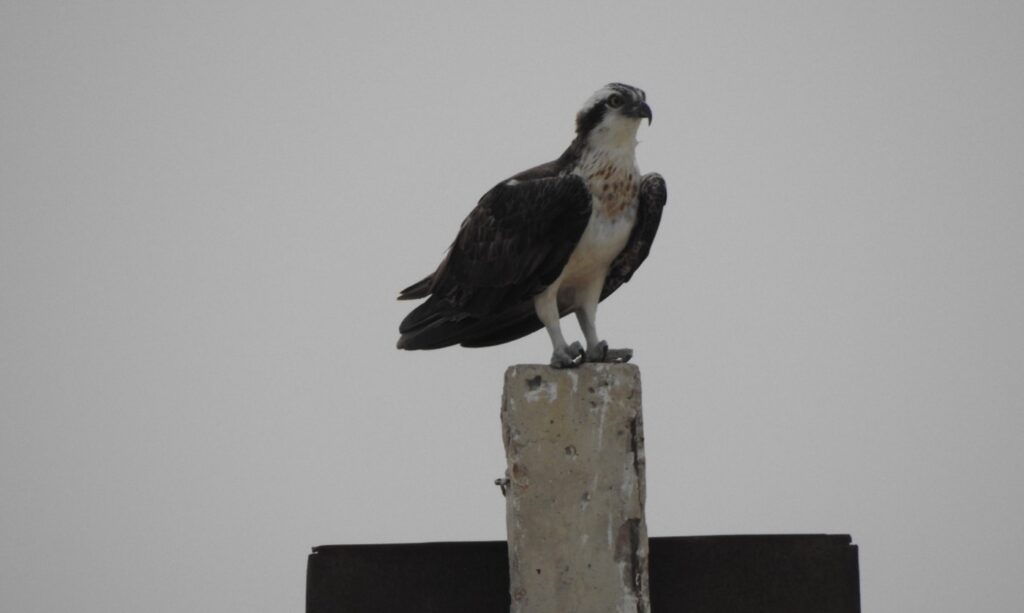
On the way back, we decided to see how the “Western Alal-KS-7” gas pipeline is being built. This view did not please us. Almost along the entire length, which is 180 km, an embankment has been erected over the gas pipeline, reaching 150-200 cm in some places. Passages in the embankment are not provided. Animals practically do not cross the embankment, we saw single traces of fox crossings, and numerous tracks turning away from the embankment – saigas, hares, foxes. The question is serious, it must be solved by introducing mitigating measures not provided for by SANEG – an oil and gas company that produces hydrocarbons in the Western Aral region.
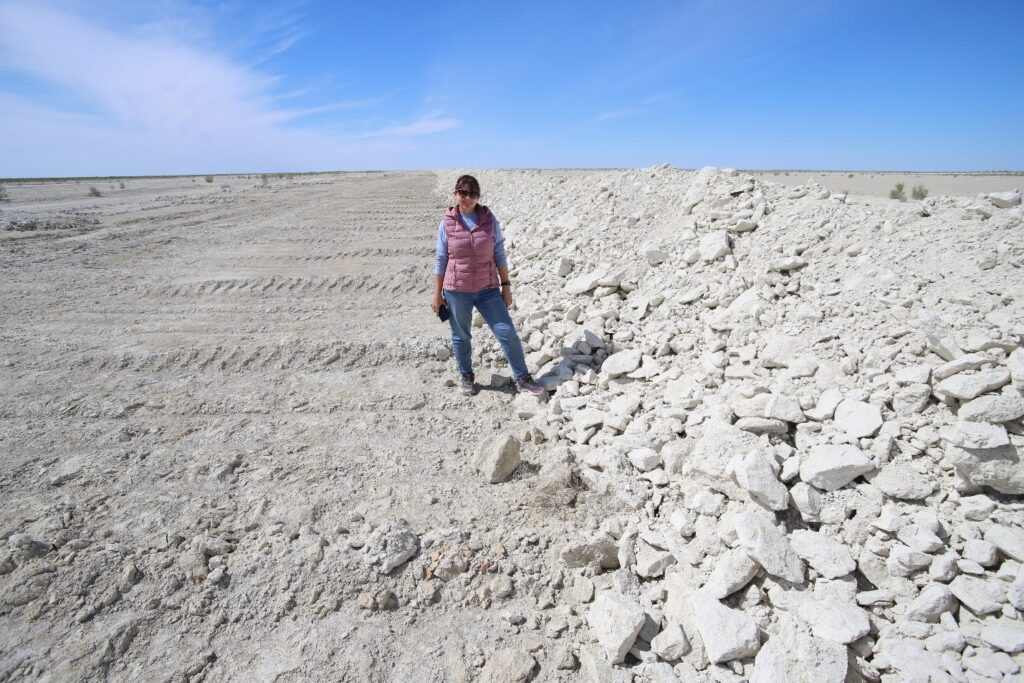
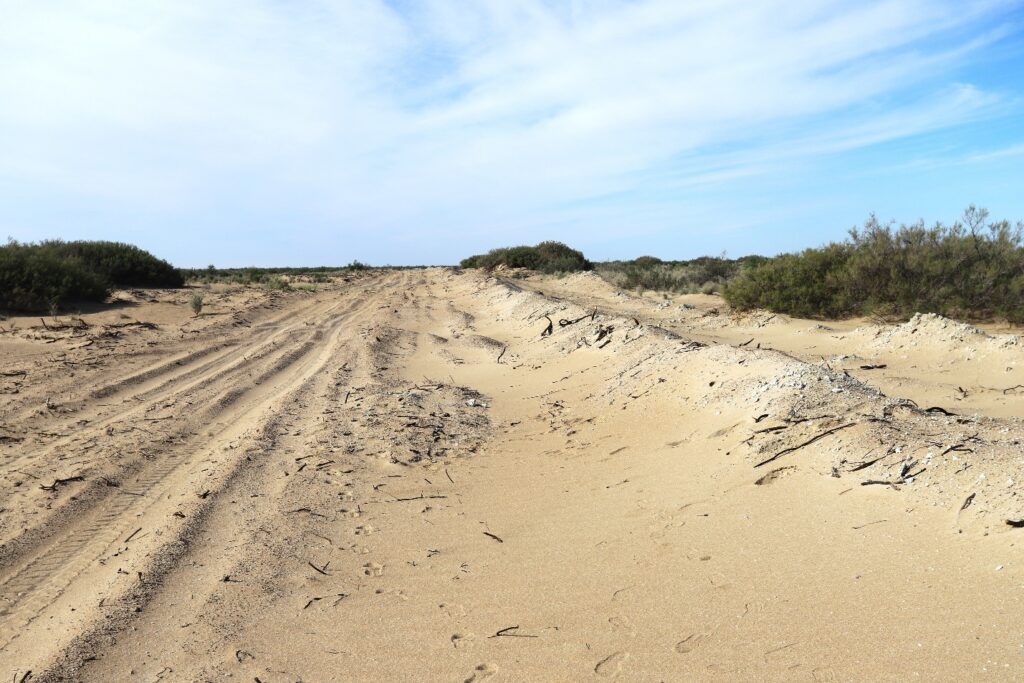
The last day of the expedition ended with a rather unpleasant event related, as at the beginning of our trip, to our car. Crossing another sand dune, the car came to a halt. As it turned out later, the fuse blew, which was impossible to predict and avoid. We knew this area well, we were a few kilometers away from the main road, and the risk was not great. But we had to spend time and effort on the rescue operation – to go on foot through the desert to the nearest town of builders, pull the car out with a tow rope and tow it to Muynak. Separate thanks to the guys from Inter-Engendering, who not only pulled us out, but also watered and fed us, and provided communication. Thanks to the guys from the national park who passed on the information, Azhibav and his son who towed us to Muynak and the mechanics of Muynak who repaired our Niva twice. As a result of this story, we once again came to the conclusion that trips on SCA cars, which are already 10 years old, are becoming unsafe, and it is time to think about updating at least one of them.
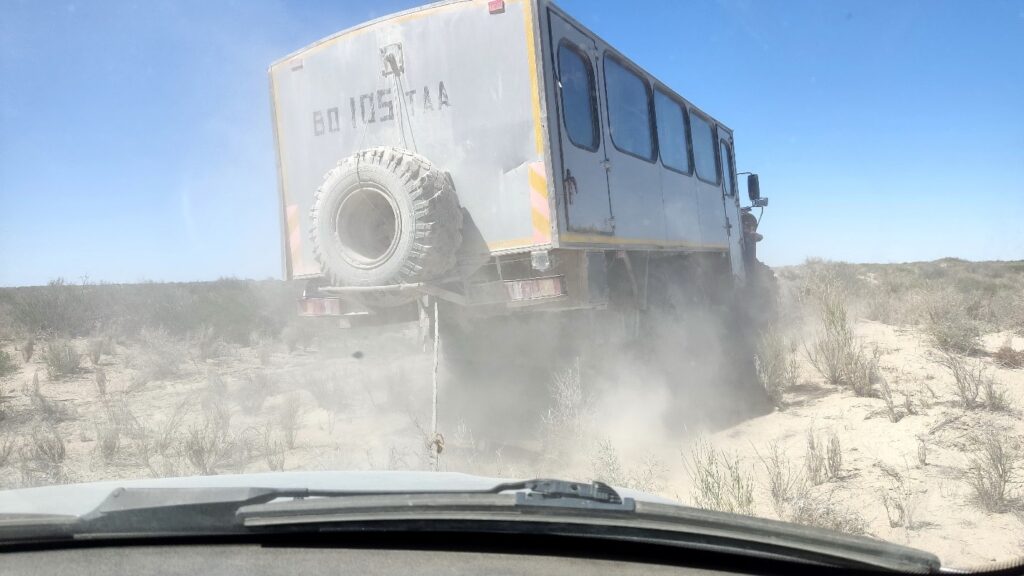
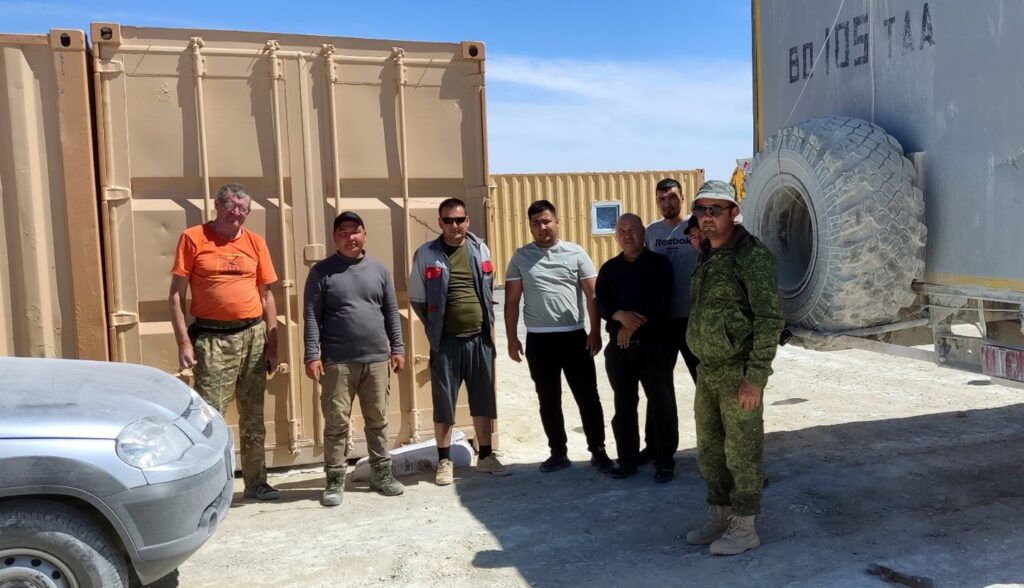
Overall, the expedition was very productive. We discovered new saiga habitats, supplemented the lists of birds and invertebrates. We collected data from camera traps and installed new ones, including in new locations. Data processing is currently underway, and we will share the results in the near future.
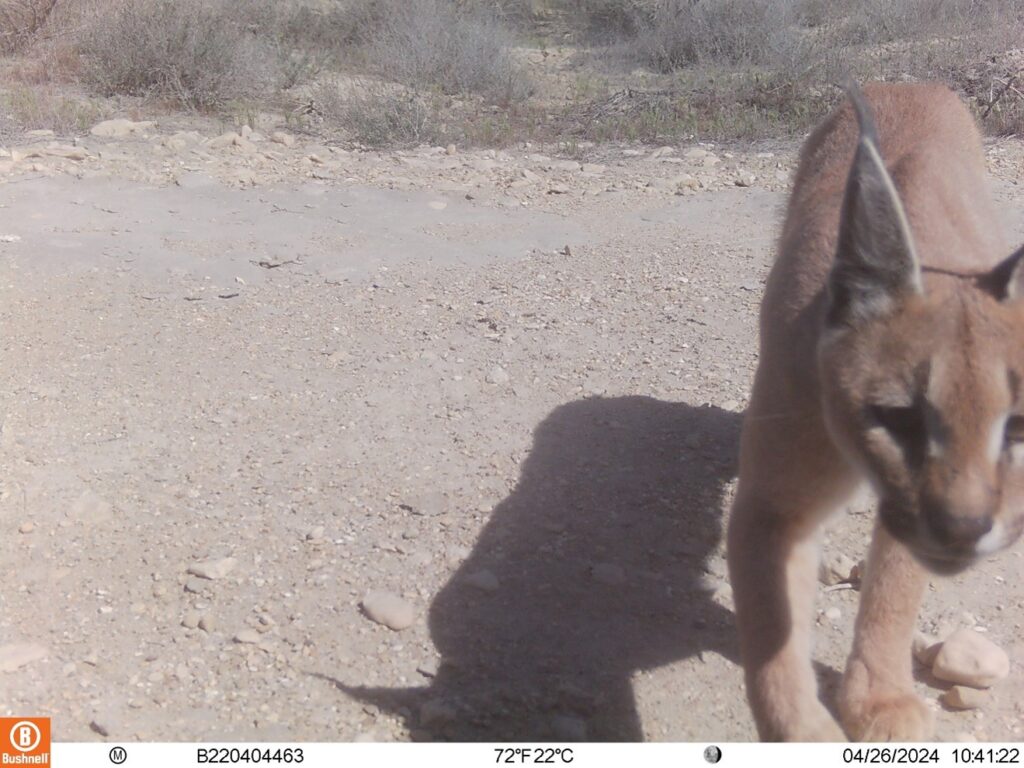
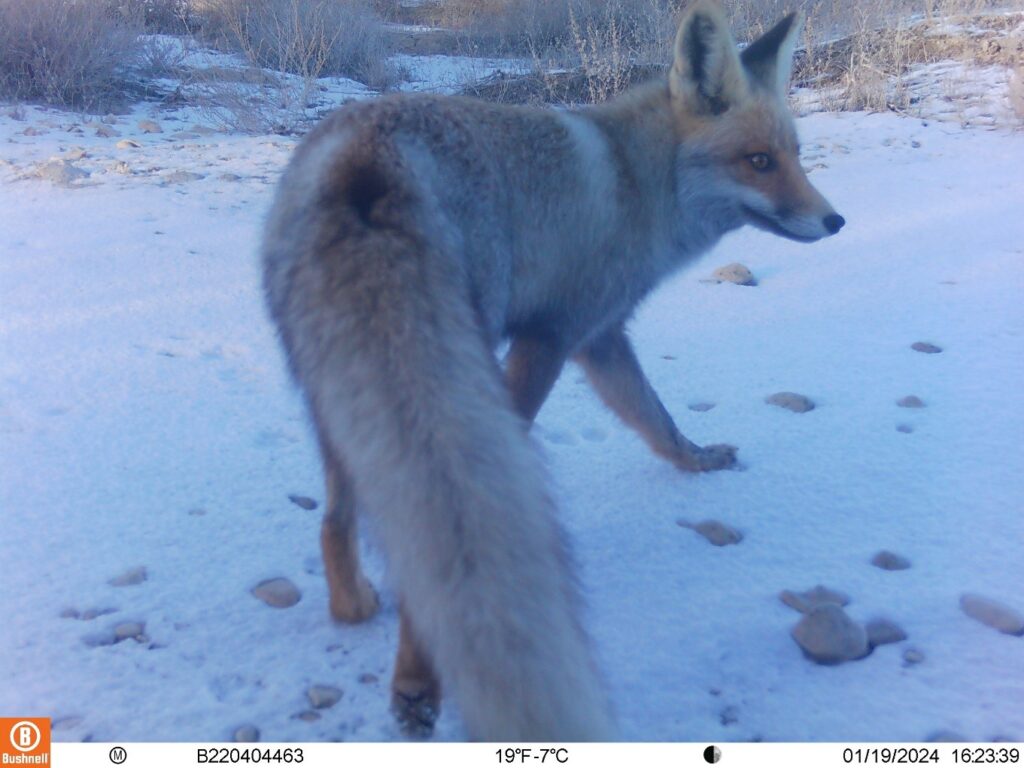
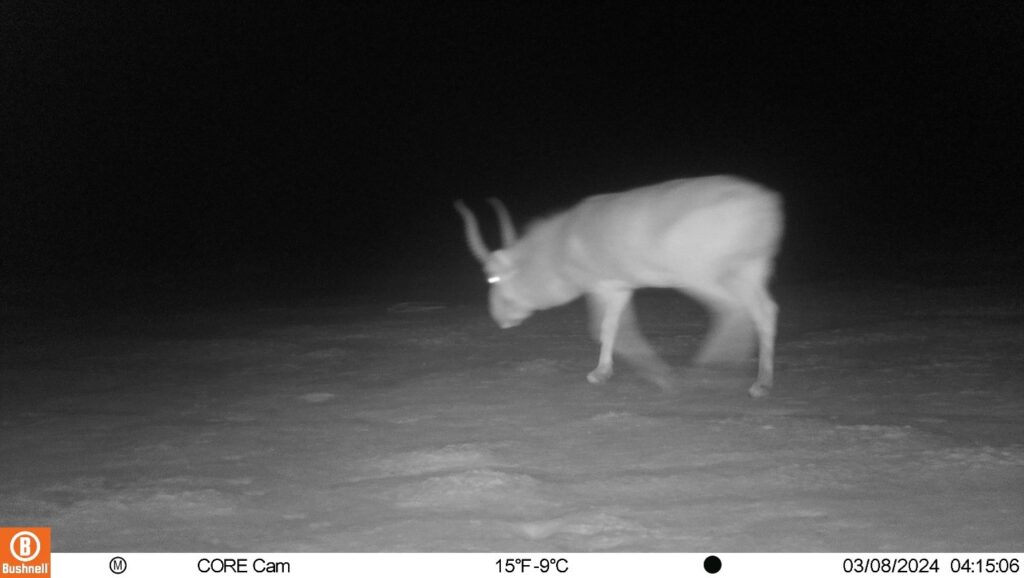
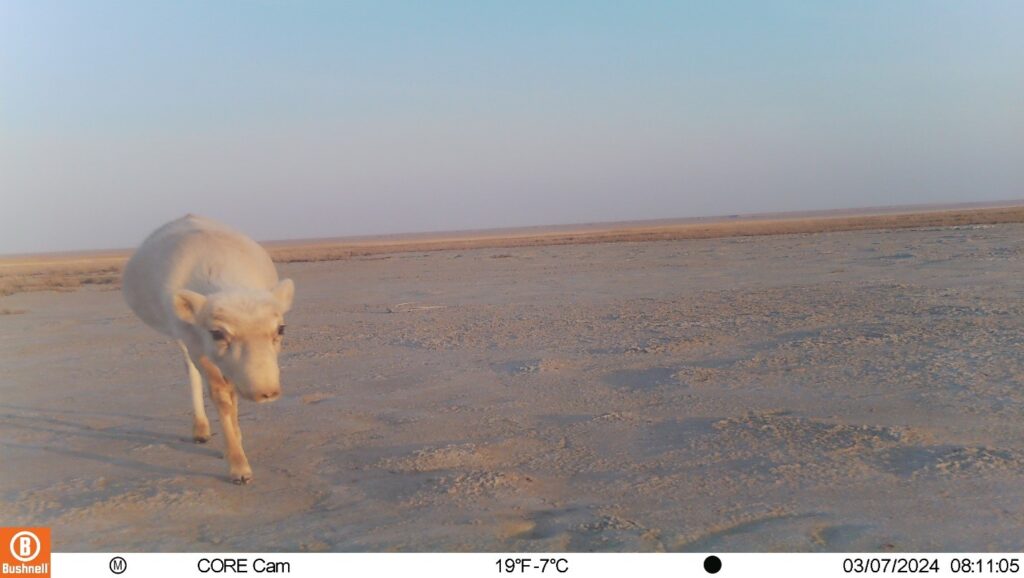
Elena Bykova
Photos by Alexander Esipov, Elena Bykova and Javlon Erkulov
